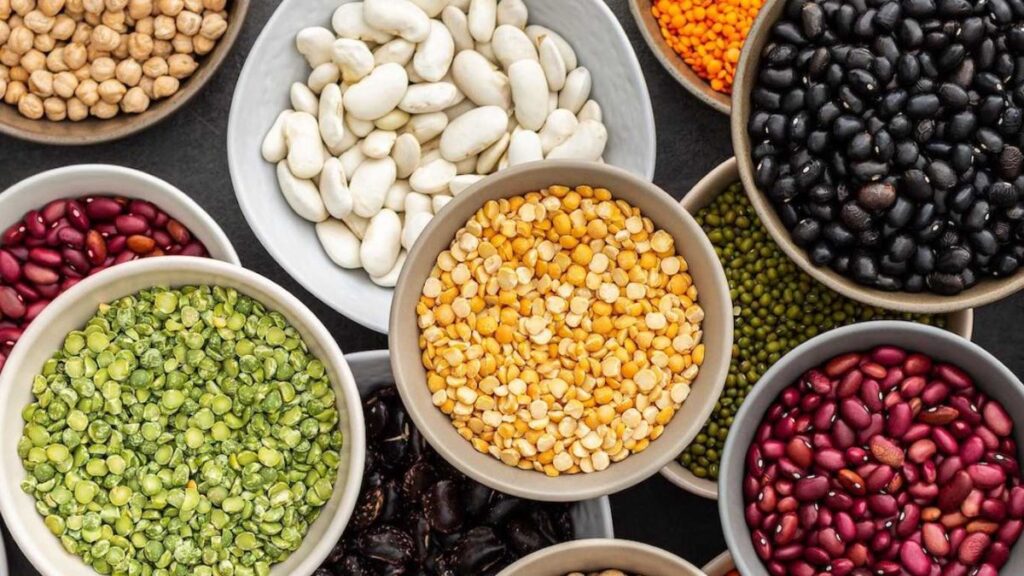Introduction: The Curious Rise of Çeciir
In the age of kale smoothies, molecular gastronomy, and AI-powered nutrition, one humble ingredient has begun to carve a curious niche in both foodie and wellness circles: çeciir.
Pronounced “cheh-jeer”, this ancient pulse—long overshadowed by its more commercial cousins like chickpeas and lentils—is making a vibrant comeback in kitchens, cafes, and even Michelin-starred menus. Originating from the rugged, arid landscapes of Central Anatolia, çeciir is far more than a rustic bean. It’s a food story steeped in history, cultural resilience, and nutritional depth.
But what exactly is çeciir? Why is it suddenly the darling of modern gastronomy? And can this obscure legume become the next quinoa or goji berry? Let’s explore.
What is Çeciir? Unpacking a Forgotten Superfood
Çeciir is a wild heirloom variety of pulse believed to be a cousin of the common chickpea, yet with a firmer texture, nutty-earthy flavor, and a dense nutritional profile. Traditionally grown in semi-arid regions, çeciir has a hardy nature—it thrives in poor soils, requires little water, and is naturally pest-resistant.
In local Turkish dialects, the word çeciir has been used interchangeably with variations of chickpea, but farmers distinguish it as a “wild pulse.” Historically, it was left for livestock or ground into flour in lean times, seen as a food of last resort. Ironically, that marginalization preserved its purity and genetic heritage—leaving us with an untouched superfood in an era obsessed with authenticity and clean eating.
The Nutritional Goldmine: Why Çeciir is Stealing the Spotlight
Let’s talk macros, minerals, and the stuff that makes nutritionists swoon.
Nutritional breakdown of çeciir per 100g (dry):
-
Protein: 21–23g
-
Fiber: 17g
-
Iron: 6.1mg
-
Magnesium: 95mg
-
Zinc: 3.2mg
-
Folate: 285μg
-
Calories: ~365 kcal
With a protein content rivaling lentils and a fiber load that puts processed grains to shame, çeciir is plant-based dynamite. Its low glycemic index and anti-inflammatory compounds make it a favorite among diabetics, vegans, and athletes alike.
But çeciir’s magic doesn’t stop at macros. It contains rare polyphenols and trace elements like selenium and molybdenum, both crucial for cellular regeneration and immune response. It’s also a prebiotic powerhouse, feeding good gut bacteria and boosting microbiome health.
In an age of functional foods, çeciir isn’t just another carb—it’s food that does something.
Anatolian Origins: Çeciir’s Deep Cultural Roots
Çeciir’s history runs parallel to the evolution of Anatolian cuisine. For centuries, rural communities across eastern Turkey, parts of Armenia, and western Iran relied on çeciir as a staple protein source during winter. It was cooked over open fires, simmered into stews, or roasted into crunchy snacks called “çeciir kebabı.”
Beyond sustenance, çeciir had ceremonial uses. In ancient village rituals, çeciir was scattered on fields to bless harvests, or served at funerals as a symbol of resilience and the cycle of life. The pulse became part of folklore, mentioned in old Ottoman proverbs and nomadic poetry.
Yet, industrial agriculture nearly killed çeciir off. As hybrid legumes took over the global food chain, smallholder farms that cultivated çeciir either disappeared or switched crops. Only a few pockets—remote villages in Sivas, Erzurum, and Kars—continued its cultivation as a matter of tradition, not profit.
That is, until now.
Çeciir’s Comeback: From Obscurity to Culinary Cool
So why has çeciir gone from near-extinction to Instagram stardom?
It began quietly in 2021, when a Turkish ethnobotanist named Dr. Aylin Yavuz published a paper on “forgotten Anatolian pulses.” Çeciir was one of her key case studies. Her findings caught the attention of New Nordic chefs, always on the hunt for lost grains and legumes. Soon, çeciir began popping up in Copenhagen’s food scene, reimagined in wild-fermented broths or paired with smoked fish and fermented dairy.
By 2023, Turkish chefs like Musa Dağdeviren and Refika Birgül started advocating for çeciir’s culinary revival. They emphasized its sustainability, deep flavor, and heritage value—aligning perfectly with global trends in locavorism and regenerative food systems.
Today, çeciir is being served in slow-cooked confit dishes in Berlin, fermented into miso in Tokyo, and used in protein bars in Brooklyn. It has become an edible emblem of what food can be: cultural, powerful, and deeply meaningful.
Modern Dishes Reimagining Çeciir
Let’s take a detour from theory to the table. Here’s how çeciir is being transformed in modern cuisine:
-
Çeciir & Roasted Garlic Hummus
Earthier and chunkier than traditional hummus, this version boasts a depth of flavor and texture that’s addictive. -
Çeciir Tacos with Smoked Paprika Aioli
A vegan twist: think smashed çeciir filling with pickled onions, jalapeño, and aioli. -
Çeciir Power Bowl
Featuring roasted çeciir, quinoa, tahini-dill drizzle, and shaved fennel. -
Çeciir Risotto (Ceciotto)
Instead of arborio, the pulse is slow-simmered with mushroom broth and topped with crispy sage. -
Çeciir Flour Brownies
Yes, really. The pulse’s natural starch makes it a great base for gluten-free, protein-rich baking.
Çeciir vs Chickpeas: What’s the Real Difference?
| Category | Chickpeas | Çeciir |
|---|---|---|
| Taste | Mild, creamy | Earthy, nutty, slightly smoky |
| Texture | Soft when cooked | Firm and meaty |
| Protein | ~19g/100g | ~22g/100g |
| Farming | Mass-produced | Heirloom, small-scale |
| Culinary use | Global, versatile | Niche, artisanal |
| Shelf Appeal | Familiar | Novel, exotic |
Though they share a lineage, çeciir’s character is bolder—think chickpeas with an edge. For chefs seeking more punch in legumes, it’s an obvious choice.
The Sustainability Argument
Çeciir is more than tasty. It’s ecologically sound.
Because of its resilience, çeciir:
-
Requires 40% less water than commercial pulses.
-
Fixes nitrogen in the soil, improving fertility.
-
Grows well in intercropping systems, reducing land-use stress.
For regions grappling with drought, climate shifts, and food insecurity, çeciir offers a compelling case for climate-smart agriculture. Seed-sharing cooperatives in Eastern Turkey have begun reviving çeciir not just as food, but as an act of environmental stewardship.
The Future of Çeciir: From Village to Global Pantry
Can çeciir scale? The answer lies in a hybrid approach.
Boutique food brands are already jumping on the çeciir bandwagon. Artisan pasta companies in Italy have begun experimenting with çeciir flour. Craft breweries are testing çeciir-based mash for gluten-free ales. And in the wellness sector, çeciir protein powders are emerging as a clean, traceable alternative to soy or whey.
Agricultural cooperatives in Turkey, supported by NGOs and diaspora chefs, are helping farmers transition into regenerative çeciir farming. Seed banks are preserving native varieties, and universities are offering grants to study the pulse’s broader applications—from vegan meats to bio-packaging materials.
In short, çeciir is on the cusp of transformation—from rustic survival food to a versatile, sustainable, and culturally rich global commodity.
Çeciir and the Food Identity Movement
Beyond taste and health, çeciir embodies something deeper: a reclamation of identity through food. In a globalized food economy dominated by industrial sameness, çeciir tells a story of place, memory, and resilience. It reminds us that some of the best foods are the ones closest to the earth—and farthest from the mainstream.
As younger generations seek deeper connections with what they eat, çeciir offers an antidote to mass-produced nutrition: a seed of heritage, flavor, and future in one bite.
Conclusion: The Pulse with a Pulse
In the ever-rotating carousel of food trends, çeciir stands apart. Not because it’s flashy or heavily marketed, but because it’s real—rooted in history, bursting with nutrition, and brimming with potential.
If you see çeciir on a menu or in a farmer’s market bin, don’t pass it by. Cook it. Taste it. Ask where it came from. With every bite, you’re not just fueling your body—you’re participating in a quiet, delicious revolution.






